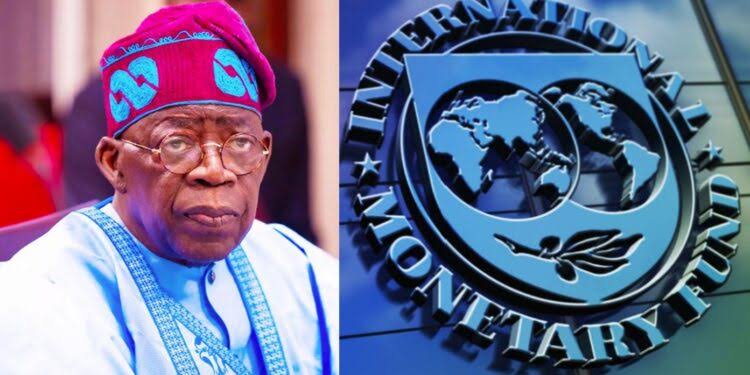Nigeria’s Growth Upgrade Masks Fiscal Strain
IMF lifts Nigeria’s 2025 growth to 3.9%, yet markets stay cautious. Eurobond NGERIA47= 10.9%, MPR 26.75%, inflation 28%, and naira ₦1,540/USD tell another story—stability without confidence, yield without conviction, growth without reform.

The IMF’s upward revision of Nigeria’s GDP outlook—to 3.9 percent in 2025 and 4.2 percent in 2026—reflects short-term macro stabilization rather than structural renewal. The forecast captures temporary balance achieved through fiscal restraint, oil recovery, and monetary tightening, yet underlying distortions—weak revenue, shallow FX liquidity, and subdued private credit—continue to define Nigeria’s risk premium.
Oil production has stabilized around 1.55 million barrels per day (including condensates), supporting near-term receipts. Brent (LCOc1) trades near USD 85/bbl, keeping fiscal flows positive, while the manufacturing PMI has held marginally above 51, signaling modest supply-chain recovery. Headline inflation has eased from 33 percent (Q1 2025) to 28 percent (Q3 2025), a decline driven largely by base effects and monetary compression rather than productivity gains. These improvements validate short-term optimism but remain cyclical and policy-dependent.
Fiscal fragility persists. The federal revenue-to-GDP ratio remains below 10 percent, while debt-service-to-revenue exceeds 80 percent as of mid-2025 (CBN and DMO data). The 2023 fuel-subsidy removal narrowed deficits but intensified inflationary pressure. Arrears in the energy sector and an unresolved FX backlog estimated at USD 5 billion (market sources, September 2025) weigh on credibility. Without durable tax reform and expenditure discipline, fiscal space will stay constrained despite headline growth.
Monetary policy remains in tightening mode. The CBN Monetary Policy Rate (MPR) stands at 26.75 percent, with T-bill yields around 22 percent, anchoring inflation expectations but constraining credit creation. Private-sector lending growth has slowed below 15 percent y/y, with commercial-bank loan-to-deposit ratios flat near 58 percent. Credit transmission is muted: liquidity is locked in sovereign paper, limiting productive investment.
FX management has improved but not normalized. The official naira (NGN/USD) rate averages ₦1,540, with a parallel-market spread of 12–15 percent as of October 2025. The managed float depends on administrative interventions—oil proceeds and targeted liquidity injections—rather than organic market depth. Hedging costs remain elevated (800–900 basis points), deterring long-term portfolio flows.
Oil’s contribution explains much of the IMF optimism. Higher prices and restored output temporarily strengthen external balances, yet upstream investment remains insufficient to sustain gains. Non-oil GDP, contributing roughly 92 percent of employment, continues to underperform due to weak consumer spending, unreliable power supply, and logistics bottlenecks. Without diversification, headline growth masks the fragility of household demand and fiscal durability.
Debt-market pricing reinforces that skepticism. The Nigeria 2047 Eurobond (NGERIA47=) trades around a 10.9 percent yield (mid-October 2025), compared to GHANA29= at 8.4 percent and EGYPT32= at 8.7 percent. The differential captures higher refinancing risk and limited fiscal buffers. Domestically, the curve remains steep as short-dated paper yields above 21 percent, reflecting liquidity preference amid refinancing pressure.
Equity valuations mirror this caution. The NGX All Share Index (NGSEASI) is up roughly 7 percent year-to-date, driven by bank and oil counters, yet forward P/E ratios (~8.2x) remain compressed compared with frontier peers. Earnings visibility is limited by currency volatility and high funding costs.
The current equilibrium is a policy-managed stabilization phase. Fiscal austerity, monetary restraint, and oil support have delivered balance without growth dynamism. The IMF’s optimism recognizes this technical stability but overlooks execution risk—tax reform fatigue, FX rationing, and the political ceiling on further tightening.
Nigeria’s near-term outlook remains tactical. The market offers high nominal yields but negative real returns once inflation and FX risk are priced in. Eurobond spreads and the naira’s fragile equilibrium confirm that investors are trading liquidity, not conviction. Until non-oil revenues rise, FX markets deepen, and inflation moderates sustainably below 20 percent, the economy will stay in a high-yield, high-volatility regime—tradeable for carry, not investable for duration.





